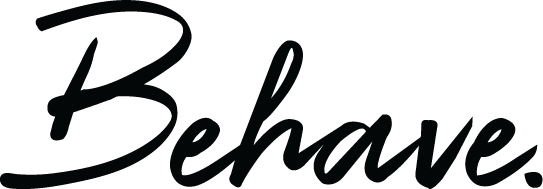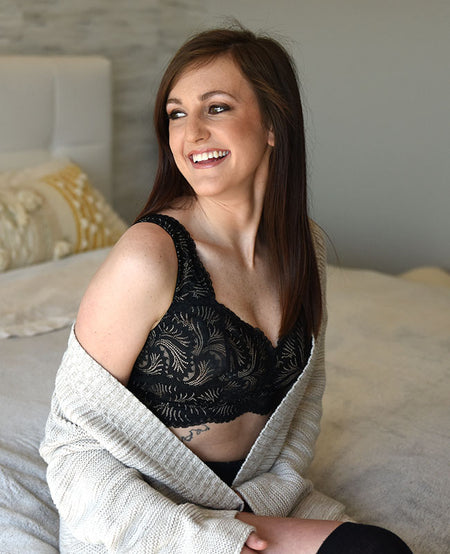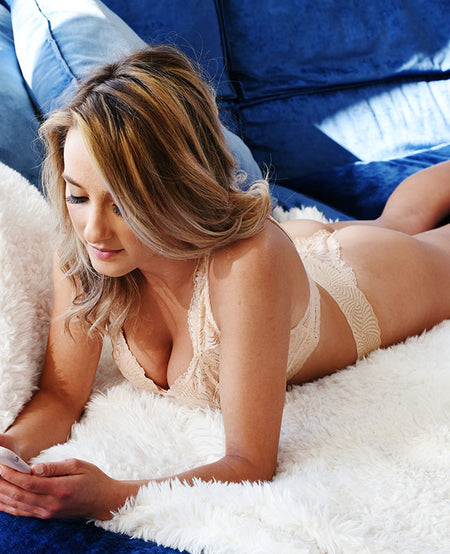Focus is NOT the Same as Exclusion.
July 21 2020 – Athena Kasvikis

Time for a rant. Get ready, because I’m fired up.
What does inclusivity mean? Specifically for a business.
Does inclusivity mean that a business is responsible for ensuring that it offers a product that meets the needs of the entire populace? Should it ensure that its focus is as broad as possible so that more people can buy its products?
Here’s the definition of inclusivity from the dictionary just so we’re on the same page:
“the practice or policy of including people who might otherwise be excluded or marginalized, such as those who have physical or mental disabilities and members of minority groups.”
So I read this and come to the conclusion that being inclusive means that you’re finding ways of serving people who don’t have many good options today. It’s a focus on the underserved, not necessarily a focus on the all.
I shall be presumptuous and say that the lingerie industry is a great example in the past 30 years of what it means to NOT be inclusive. As a whole, it focused only on the ideal of what a woman’s body should look like, not what it actually was. It took far too long for Plus-sized brands to develop and shine, and until recently, blocked out other brands that would be considered “fringe” from a sizing perspective. Let’s not even think about how the industry as a whole was portrayed, with white skinny models with no more than a B cup dominating imagery and airwaves.
Inclusivity in this space, until about 10 years ago, consisted of maybe 1 black model in a runway show of angels who were all close to a size 0. You maybe were lucky enough to see a different skin color, but the bodies were all the same.
It was f-ing tragic.
In response to the rampant objectification of women, the societal unraveling of male expectations driving a female-centric industry, and women’s overall frustration in finding size and body representation, we entered what I would describe as an almost-golden-era of lingerie.
Not because the big players in the industry actually expanded their offerings or designed with curvy consumers in mind, no. Almost-golden because we're seeing a bunch of upstart brands and independent labels run by women, decide to fill in the many gaps that exist.
Who better to change a female-focused industry than females, right?
From UK based Nubian Skin, who absolutely crushed it by offering nude-tones for women of color, to Curvy Couture, who still does well in making bras specifically for the curviest women, we were able to see a huge response to the lack of inclusivity by large brands, because of the introduction of small brands who had focus.
Inclusivity in lingerie is all about ensuring that ALL women can find a fit for their body.
And I’m a ardent supporter of this movement.
In fact, I’m such a huge supporter of it that I started a brand JUST for Curvy In-Betweeners, the most underserved and under-represented woman in the entire industry. Being a Curvy In-Betweener myself, and seeing all of the progression in these last 10 years, everywhere in lingerie BUT for women like me, it only made sense to start a brand that could meet their needs.
My choice was to focus on the most underserved consumer that I personally knew best. This is what being inclusive is about.
Was I being exclusionary by focusing on a specific consumer? Am I purposefully bashing women of all of sizes that do not fit into my products?
Obviously, the answers are no. It should be clear that my purpose is to bring more women into the fold, not less. I’m adding, not subtracting.
Focusing is NOT excluding. Those two words are so very different and we need to educate ourselves on why they don’t mean the same thing.
Because this conversation matters.
It’s because I’ve read 1 too many comments recently from non-Behave sized consumers who try and boob-shame me into thinking that Behave is NOT inclusive because we cater to a certain consumer.
And that’s bananas. Like straight, florida-man crazy shit.
Because when you have a consumer that cannot go into a store in the US, the beacon of consumerism to the world, and find a size that fits her, it’s shitty.
It feels like inclusiveness applies to everyone BUT you. And that’s maddening.
To believe in inclusivity, you MUST believe that everyone deserves something for them. It’s a core tenant of the belief.
So to infer that focused companies are somehow not being inclusive to you because they don’t carry your size, is the opposite of progress.
Because the only way we get to a point where every woman can find things that fit her, is by having startups and industry disruptors focus on the gaps in the market in a bid to make it more whole.
And we cannot do that as startup brands while still meeting every single consumer’s needs. It’s physically and financially impossible to make 100 sizes of bras right out of the gate.
You do not want me to make everything for everyone either.
I know about Curvy In-Betweeners because I am one and grew into my breasts BEFORE the golden era of lingerie. I struggled with self-confidence and professionalism as I tried to manage my G cup for years and learned a ton about what works, what doesn’t and how we need to move forward to solve it. My personal trials led to actual innovation for millions of women. Innovation that we hope to someday grow large enough to spread to the masses.
Need is the mother of invention and I can tell you that without a doubt, Curvy In-Betweeners do not get products made for them unless women like me innovate to fill that need. Those of us with the biggest pain points should be leading the charge to solve them or we risk going back to the dark days where big brands decided autonomously what would work (or not) for ladies like us.
Rome was not built in a day and neither is a startup brand. New brands like mine are needed to shine a light on marginalized consumers that fall into the shadows of big brands.
Victoria’s Secret cannot and will not be our inclusive savior.
Why?
Because they have enough issues. They don’t understand our consumer. They don’t currently design for her and likely wouldn’t do the heavy lifting of hiring a staff of curvy ladies and starting from scratch to prototype designs that would work for her. It’s not their core competency and to be honest, I don’t want them f-ing my fellow ladies up anymore than they already have.
Thirdlove will not be our savior.
Why?
They have already tried expanding sizes with their latest $55M funding round and they’ve managed to get to 78 sizes of bra so far. That’s hugely important and also hugely expensive. But are they experts in the unique needs of Curvy In-Betweeners? Do they truly understand the amount of engineering that goes into a segment of their customers as they also are focusing on doing more with Plus and Traditional sizing? Likely not.
You know who our lingerie saviors will be?
Startups. The ones that experience a need and innovate to fill it. Not the ones that are so big that they lose interest in the face of corporate profits. Because it’s always easier to make money from the masses than the fringe.
The Peppers of the world making bras for smaller busted ladies that need their own designs to fit well are moving us forward..
The Behave’s of the world, showing that big boobs and small bands are a thing to be recognized and designed for and creating necessary change.
We, the ladies with the most to gain, start the companies with the most to give.
Because inclusivity cannot be defined by everyone doing everything. We asked for that to happen for 30 years with big name lingerie brands that dominate our malls and it did not go well for us as females.
Expanding our lingerie offering starts with each of us independent brands having the ability to do our thing and to do it well. More startups in lingerie means that there are less big brands taking up all of the oxygen and space. It means that we’re growing the pie for everyone by turning whitespace into opportunity.
So do me a huge favor if you’re a small cupped woman. Or a plus-sized one. Or anywhere in-between.
Celebrate companies that are trying to narrow the sizing-gap. Applaud companies that are innovating for unmet needs. Get jazzed, not pissed, when you see something that doesn’t work for you, but totally works for others.
Focus is not the same thing as exclusion.
To build a more equitable marketplace for lingerie, we need to focus on the areas that are the most underrepresented.
Lingerie, like many categories, is not quite there yet. It’s not inclusive in sizing, not inclusive in ethnicities it represents, not inclusive in models it uses to highlight its products. But it’s getting better and that’s what matters.
There’s work to be done. And I’m betting it’ll get done by female entrepreneurs interested in focusing on the unmet needs of some, so that they can grow the inclusivity for all.


